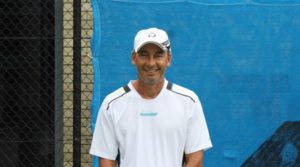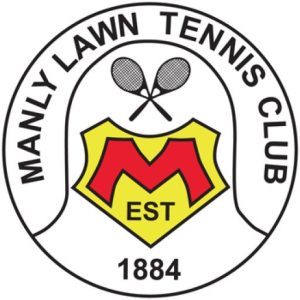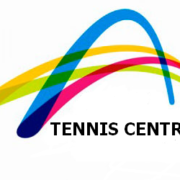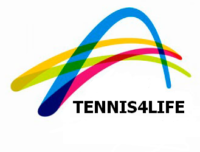It takes a special combination of attributes to join the legends on court, writes Carla Jaeger. They have quiet feet. They know their roles and their moves. They know when to offer a towel and when to stay out of the way of a player who’s about to explode. And they do this without showing emotion or attracting attention.
The Australian Open ballkids will march onto the courts at Melbourne Park tomorrow and face the sweltering January heat, whacks from 200km/h fuzzy yellow balls, and the demands of the world’s best tennis players.
The 394 ballkids chosen for this year’s summer of tennis have been perfecting their skills through months of training. They’re there to make the game as efficient as possible; retrieving stray tennis balls, providing balls for serves, servicing the players with new or restrung racquets, towels or drinks, mopping up the players’ sweat to avoid slip hazards, and removing interloping insects and moths. All this they must do while remaining silent and trying not to attract attention.
But, try as they might to avoid it, there are moments when they just can’t help but capture the spotlight. Global audiences laughed when Moroccan qualifier Elliot Benchetrit asked a ballkid to peel his banana at the 2020 Australian Open (the chair umpire told him to do it himself); fawned when Rafael Nadal kissed the cheek of a ballkid he accidentally whacked in the face the following year; and scowled when Russian star Daniil Medvedev unleashed a tirade about the ballkids for failing to deliver the balls in the manner he wanted during last year’s men’s final (the umpire told Medvedev the ballkids were doing their jobs exactly as they’d been taught).
Eager to learn more about the faces under the Legionnaire hats, The Sun-Herald joined a training session with 16 of this year’s ballkids. The kids at Melbourne Park’s Kia Arena are among the hundreds selected for the tournament, narrowed down from more than 1000 applicants chosen through a process that begins a year in advance. The youngsters for this year’s Open range in age from 12 to 15. Some are entering their third or fourth year as a ballkid; others are making their debuts on the blue courts. Chaperone and ballkid supervisor Eliza Flower, who runs training sessions, said those chosen needed to have good athletic skills and attention to detail. It’s not compulsory to play tennis – though it certainly helps, as the kids need to understand how the scoring of the game works. ‘‘ The really good ballkids have quiet feet when they run, and they don’t interrupt play,’’ Flower said.
Once selected, the preparation begins with five training sessions in which the basics of the job are taught – how to communicate (ballkidding has its own language, but more of that later), how to roll the ball, how to anticipate where the ball needs to be, and how to service the players.
Oncourt skills are mastered at tournaments in November and December so the ballkids are prepped for January’s Open. From the day the tournament starts, the ballkids are on site at Melbourne Park and ready for action, spending eight hours each day at the venue, half of those on court – one hour on, one hour off.
The rotations on the court decrease to 45-minute intervals if the weather reaches a certain temperature. Other methods, such as wearing padded neckties soaked in cold water, are also used to cope with the heat. If the kids work late, they start late the next day, or are given days off. They are grouped into teams of six, known as ‘‘ squads’’ . These squads are assigned a court in the morning and will work together as a team for that day. When they’re not on the court, the kids are ‘‘ backstage’ ’ in designated lounges, where fruit, water and Powerade are available. ‘‘ The lounges are really good. They provide lots of games, and you get to roll the ball everywhere,’’ ballkid Molly Rizun, 14, said. It’s fun and games backstage.
But while on court the kids are hard at work, with their performance constantly assessed by a supervisor who gives individual and squad feedback after each match. ‘‘ It’s weirdly old-school ,’’ Flower said. ‘‘ They have pretty hard feedback and pretty much there’s always something they can improve on.” The kids want that kind of discipline, too. They come off court and ask Flower what they can do better. Flower often finds herself nitpicking over small things like tucking their thumbs when they communicate how many balls they have. One of the harder rules ballkids have to follow is not talking to the players or showing any emotion – which can sometimes get hairy. ‘‘ When some players get a bit angry at themselves – or us – and they yell at you, you just have to stand there with a straight face,’’ ballkid Esther Pound, 15, said. ‘‘ Sometimes it’s a bit hard. Sometimes you want to laugh, or cry, but you just have to stand there.’’ The kids are used to it, with many having copped a spray from at least one player during their time. One ballgirl, already media savvy, chose not to disclose which player screamed at her. ‘‘ I don’t want to get sued,’’ she said. Jaidyn McNeil, 13, was willing to take that risk, dishing the details of his experience with Nick Kyrgios during the men’s doubles semi-final at last year’s Open. ‘‘ He was getting really frustrated as he was losing the first set, and he nearly hit me with a ball,’’ he said. ‘‘ It was really funny, but I was also trying to keep a straight face because we’re not really allowed to kind of smile.’’ After they’re assessed, the kids are given an overall rank.
The better the ranking, the better the arena they’ll be assigned for their next match. The best kids are assigned to the finals , a badge of honour among the youngsters, and something that is announced at a ballkid party the night before the match. Some might consider the extensive training a bit over the top. But other tournaments’ problems show just how important good ballkids are to the game.
At the 2015 Shanghai Masters, players were left frustrated after game play was impeded by inexperienced ballkids who delivered unwanted balls to players, were unsure where to stand, and couldn’t get the balls to the other side of the court. The ballkids are not paid, but they are given a prize pack at the end of the Australian Open, which in the past has included GoPro cameras, speakers and iPods. That’s not why they sign up to take on the role, anyway. The group we spoke to most commonly said making new friends and meeting the players are the main drawcards of the experience. Though a new pair of headphones certainly doesn’t hurt.
There are six ballkids at every court. Four of the kids are positioned at each corner of the court, while the other two are at the net, on either side of the chair umpire. Kids are assigned a position on the court based on height: the shorter kids go to the nets, the taller kids go to the base. It’s the job of the base kids to provide the players with balls for serves, which makes the base positions the more desired spot among the kids. They work together to grab balls that fall within their designated sections of the court, communicate where the balls are, and make sure their balls are at the right part of the court, ready to give to the player who is serving.
Now, to decode the language of ballkidding . . . At any given time of a match, there are six balls on court. The kids need to know at all times where these balls are. Ballkid Finn McCreadie, 14, said communication was one of the most important skills. ‘‘ Are they at the base? Are they at the net? So that way you know where to roll [the ball] to, and give it to the players as fast as you can.’’ The kids use signals to communicate with each other and the players to show how many balls they have at any given point of the match. Aside from verbal communication – which they are only allowed to do with the chair umpire and each other – there are signals to show who has each ball. Servicing is the technique used to provide the players with balls for serves.
But servicing doesn’t just involve balls. Players can request anything from a new racquet to a drink of water, to the more bizarre requests – like when Kyrgios asked ballkid Thomas Rossi to get rid of a seagull. ‘‘ The seagull was annoying him, so he asked me to kick it off. I just ran at it, scared it away, and then he just continued playing like nothing happened,’’ Thomas, 15, said. Getting balls around the court is done by rolling them to the kids. The key is to be efficient , fast and not impede play.
Sometimes players will request things that ballkids are taught not to do. One French player, for example, only takes balls from one side of the base – even though the kids are taught to never roll a ball from one base to another. They’ll usually do it anyway. Because, at the end of the day, the ballkid is there to tend to the player’s needs. Receiving refers to the way the kids collect the balls being rolled to them by one of their fellow squad members. Concentration must be high as their teammates roll balls to them, one by one. Rolling balls need to be fast and not impede the play. Balls are distributed so the ballkids at the baseline can service players with balls for serving. When receiving at the net, ballkids will start either kneeling (when opposite the chair umpire) or standing (when beside the chair umpire). Ballkids need to pre-empt the movement of the ball before the end of the point based on two possible outcomes: player A wins the point, or player B wins the point. Tiebreakers are tough work, and much of the training is spent preparing for them: Ballkids must pay close attention to the game play because the scoring is different, and the ball changes courtside quickly. ‘‘ If they don’t know where the ball is, the players are kept waiting for the ball, and they get impatient,’’ Flower said. So, now you know how it works.
Could you be a ballkid? For even the most casual tennis fans, being a ballkid looks like a glamorous job. You get to meet your heroes and watch history-making matches unfold. But the reality can be tougher and some people are not up to the task. ‘‘ The best ballkids are the ones that know what the player wants,’’ Flower said. Sometimes, knowing what the player wants means doing particularly unglamorous things; like squashing moths, shooing birds who stubbornly perch themselves on the net, or even pushing through the pain of the grazed knees commonly endured when drying the courts after rain. Ballkid Lucy Higgins, 14, said that while these were the strangest bits of the job, they’re also the most memorable. ‘‘ You have to keep running across the court and squashing them [moths] and it’s , like, 1am,’’ Higgins said. ‘‘ It’s definitely not something we practise doing in the ball-kid sessions, so it comes as a surprise to many people.’’
As the kids show us, and the supervisors tell us, being a ballkid requires initiative and concentration, as well as agility and speed. It’s about knowing when to take over a sweat towel – with time to roll a ball to a squad member – while keeping track of the entire match’s play. All within a 20-second interval between points.
If you’re forgetful or have a poor attitude, the job is not for you. Kids who come to court unprepared, without their hats or water bottles, are taken off court and reassigned when another spot appears on the roster. This is known as being TBA (to be assigned) – a title considered undesirable among the kids. Then, on top of it all, you have to be willing to risk embarrassing yourself on the world stage. It’s a common fear among the kids to appear on ballkid error compilation videos, a genre popularised on YouTube that can garner millions of views, featuring kids running into walls, fainting and falling over. Perhaps most unfortunate of all would be to have a tennis player talk about your bladder control in a press conference, as American player Donald Young did in 2010, after a match stopped for 40 minutes when a ball boy wet his pants. But it’s all worth it if you can handle the heat, literally and figuratively .
Source: SMH






